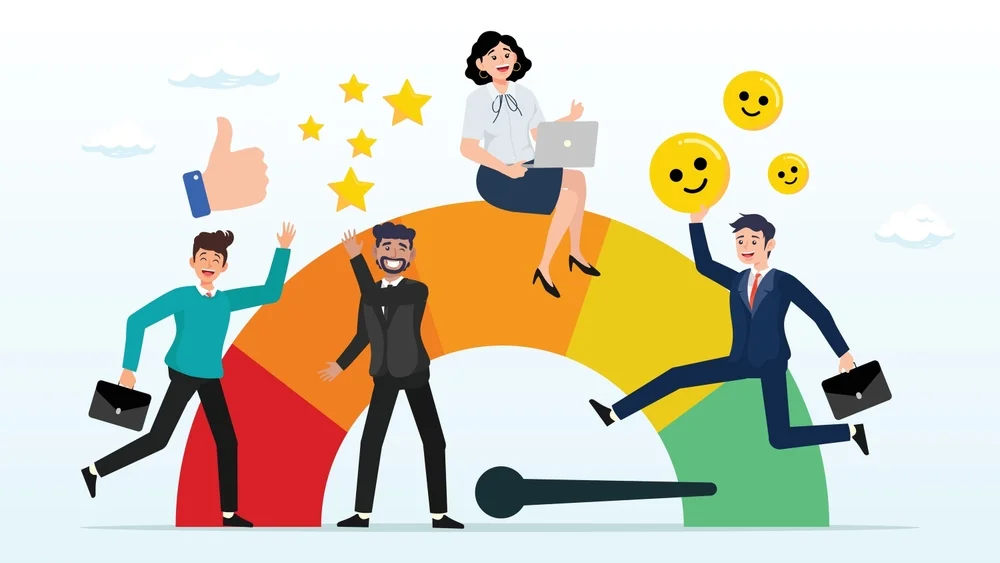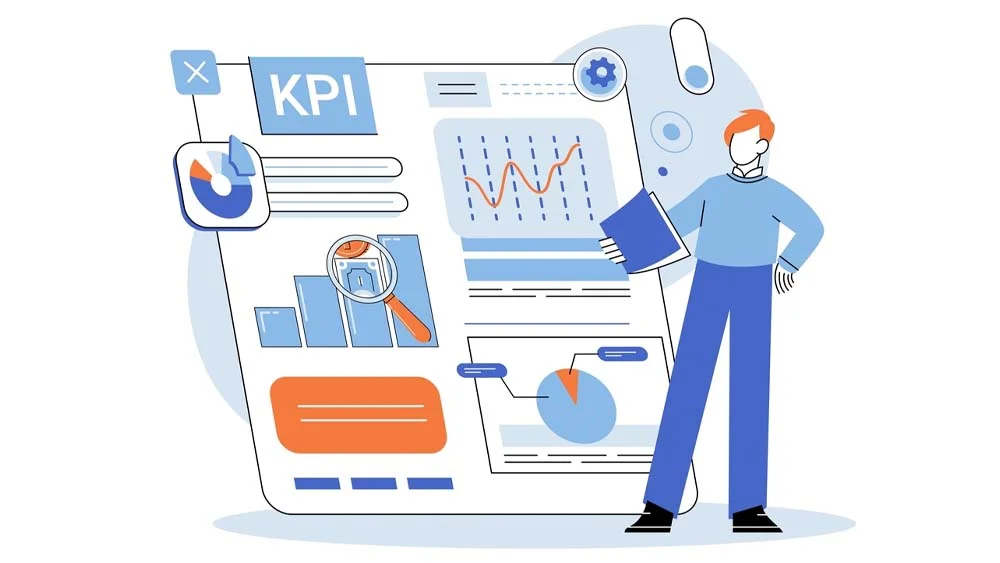The main job of an application maintenance service provider is to make sure that your app works properly, stays safe, and changes as your business needs. But how do you find out if your business is good and worth the money? It’s important to keep an eye on the right Key Performance Indicators (KPIs).
KPIs are numbers that can be measured and show how well a service provider is doing at reaching certain goals. On this page, we’ll talk about the key KPIs you should keep an eye on to judge the success of your application maintenance partner and make sure they meet your needs.
Why KPIs Matter in Application Maintenance
Working with an application maintenance provider has many advantages from KPIs:
- Transparency offers exact performance evaluation criteria.
- KPIs create quantifiable targets your provider is expected to reach, which makes them accountable.
- Analyzing KPIs helps you to find areas needing constant improvement.
- Strategic alignment makes sure your provider’s offerings complement your company goals.
You run the danger of uncertainty and misalignment in your relationship without adequately defined Application Maintenance KPIs, hence maybe resulting in disappointed expectations and lost resources.
Fundamental KPIs to Monitoring for Use in Maintenance
Application Uptime Percentage
- What It Measures: The operational percentage of time your application is available.
- Why It Matters: Uptime determines both user happiness and business processes. From downtime, lowered production, missed income, and a damaged reputation can all follow.
- Target: Reliable providers should aim for 99.9% or greater.
Mean Time to Resolve or MTTR
- What It Measures: The average time taken to resolve issues or incidents.
- Why It Matters: Fast resolution times reduce disturbance of consumers and business operations.
- Target: Although issue degree affects resolution timelines, faster is always better.
Mean Time Between Failures (MTBF)
- What It Measures: The mean interval between disruptions or failures of the application.
- Why It Matters: A greater MTBF points to a consistent and well-maintaining application.
- Ideal Target: Longer intervals between breakdowns mirror improved preventative maintenance.
Rate of First-Call Resolution
- What It Measures: The proportion of events handled during the first support contact.
- Why It Matters: High first-call resolution rates point to competent and effective support personnel.
- Target: A good benchmark is eighty percent or more.
Patch Management and Security Updates
- What It Measures: How often and timely security patches and updates are applied?
- Why It Matters: In the cyberspace of today, staying ahead of security flaws is absolutely vital.
- Target: Usually within days or weeks, patches should be issued as soon as vulnerabilities are found.
Density of Errors
- What It Measures: It measures, per unit of code—that is, per 1,000 lines of code—the number of flaws or errors.
- Why It Matters: The reason it matters is reduced defect density marks less user disturbance and improved code quality.
- Target: Defect density should drop steadily with regular maintenance over time.
Customer Satisfaction Score (CSAT)
- What It Measures: Usually obtained by means of surveys, what it measures is customer satisfaction with the support and services offered by the supplier.
- Why It Matters: Users that are happy show good maintenance and problem solving.
- Target: Usually, one considers outstanding a score of 80% or above.
Service-Level Agreement (SLA) Compliance Rate
- What It Measures: The provider’s percentage of agreed-upon service level attainment.
- Why It Matters: It guarantees the provider is meeting contractual responsibilities.
- Target: The benchmark expectation is one hundred percent compliance.
Application Performance Metrics
- What It Measures: Metrics like load times, latency, and response times.
- Why It Matters: Poor performance affects user experience and can lead to customer churn.
- Ideal Target: Applications should have minimal latency and consistent load times, even during peak traffic.
Change Success Rate
- What It Measures: The percentage of changes or updates implemented without causing issues.
- Why It Matters: A high success rate reflects the provider’s ability to adapt the application without introducing errors.
- Ideal Target: 90% or higher success rate is desirable.
Secondary Application Maintenance KPIs to Consider
In addition to the core metrics, here are some secondary KPIs that can provide deeper insights:
- Frequency of Backups: Regular backups are essential for data security and disaster recovery.
- User Feedback Trends: Monitoring trends in user feedback helps identify recurring issues or areas for improvement.
- Cost of Maintenance per User: Tracks the efficiency of your investment in maintenance services.
How to Set Effective KPIs
To ensure your KPIs are impactful, follow these best practices:
- Align with Business Goals: KPIs should reflect your broader objectives, such as improving user experience or reducing downtime.
- Be Specific: Clearly define what each KPI measures and how it will be tracked.
- Set Realistic Targets: Aim for achievable benchmarks based on industry standards and past performance.
- Review Regularly: Periodically revisit KPIs to ensure they remain relevant as your business evolves.
FAQ: Key Performance Indicators (KPIs) for Application Maintenance Providers
-
What Are KPIs, And Why Are They Important In Application Maintenance?
KPIs (Key Performance Indicators) are measurable metrics that evaluate the effectiveness of an application maintenance provider. They are crucial for:
- Monitoring performance.
- Ensuring accountability.
- Identifying areas for improvement.
- Aligning the provider’s services with business objectives.
-
Which KPIs Are Essential to Track for an Application Maintenance Provider?
Key KPIs include:
- Application Uptime Percentage: Ensures availability and minimizes downtime.
- Mean Time to Resolve (MTTR): Measures how quickly issues are resolved.
- Mean Time Between Failures (MTBF): Tracks the stability of the application.
- First-Call Resolution Rate: Indicates the efficiency of the support team.
- SLA Compliance Rate: Assesses adherence to service level agreements.
-
How Can Tracking KPIs Improve My Application Maintenance?
KPIs provide data-driven insights that help:
- Enhance application reliability.
- Identify recurring issues or inefficiencies.
- Measure user satisfaction and adjust strategies accordingly.
- Align maintenance efforts with business goals for better outcomes.
-
What Is A Good Target For Application Uptime?
A good target is at least 99.9% uptime, often referred to as “three nines.” For critical applications, higher targets like 99.99% may be required.
-
How Is Mean Time To Resolve (MTTR) Calculated, And Why Does It Matter?
MTTR is calculated as:
MTTR = Total Downtime Number of Issues Resolved\text{MTTR} = \frac{\text{Total Downtime}}{\text{Number of Issues Resolved}}
It matters because quicker resolution times minimize disruptions, ensuring smoother business operations and better user satisfaction.
-
What Is A First-Call Resolution Rate, And What Is A Good Benchmark?
The First-Call Resolution Rate measures the percentage of issues resolved during the initial support interaction.
- Why it’s important: A higher rate shows that the support team is knowledgeable and efficient.
- Benchmark: A rate of 80% or higher is considered excellent.
-
Why Is SLA Compliance Rate Critical?
The SLA Compliance Rate tracks how often the provider meets the agreed-upon service levels. It ensures the provider delivers on their commitments regarding uptime, response times, and issue resolution. Aim for 100% SLA compliance.
-
What Tools Can Help Monitor Application Maintenance KPIs?
Tools for tracking KPIs include:
- Application Performance Monitoring (APM) tools like New Relic or Dynatrace.
- Issue Tracking Systems such as Jira or ServiceNow.
- Customer Feedback Platforms like SurveyMonkey or Qualtrics.
-
How Do Security-related KPIs Fit Into Application Maintenance?
Security-related KPIs, like the timeliness of applying patches or the frequency of vulnerability assessments, ensure your application remains secure against emerging threats. These KPIs are crucial for protecting sensitive data and maintaining compliance with regulations.
-
How Often Should I Review KPIs With My Application Maintenance Provider?
Regular reviews, such as monthly or quarterly, are ideal for assessing performance, identifying trends, and making necessary adjustments to ensure continuous improvement.
-
Can KPIs Evolve Over Time?
Yes. As your application grows and your business needs change, the KPIs you prioritize may shift. Regularly reassess KPIs to ensure they align with current goals and challenges.
-
What Happens If My Provider Fails To Meet KPIs?
If KPIs are consistently unmet:
- Review and update the SLA to clarify expectations.
- Collaborate on a plan for improvement.
- If no progress is made, consider switching to a more reliable provider.
-
How Do I Set Realistic KPI Targets For My Provider?
- Analyze historical data: Understand your application’s past performance.
- Benchmark against industry standards: Use average performance metrics in your sector.
- Align with business goals: Ensure targets support your operational objectives.
-
What Are Secondary KPIs I Should Consider Monitoring?
In addition to core KPIs, consider:
- Defect Density: Tracks code quality by measuring bugs per 1,000 lines of code.
- Backup Frequency: Ensures data security and disaster recovery readiness.
- Cost of Maintenance per User: Evaluates the cost-efficiency of the services.
-
How Do KPIs Help In Strategic Decision-making?
KPIs provide actionable insights that:
- Highlight areas requiring investment or improvement.
- Inform decisions about scaling or upgrading your application.
- Offer evidence for renewing or renegotiating contracts with the provider.
By focusing on these FAQs, businesses can better understand how to use KPIs to assess and enhance their relationship with an application maintenance provider, ensuring continuous value and efficiency.
nandbox App Builder
This article’s guidelines for efficient application maintenance are perfectly compatible with the nandbox App Builder. Because nandbox is a no-code app development platform, it guarantees scalability, high reliability, and robust performance, enabling organisations to easily construct and maintain applications. Key KPIs like application uptime, SLA compliance, and customer satisfaction are supported by nandbox, which has integrated monitoring tools and features like automatic upgrades, real-time analytics, and secure hosting. Its user-friendly interface lowers MTTR and increases the change success rate by facilitating speedy resolutions and effective patch management. With its all-inclusive app creation and maintenance solution, nandbox guarantees that your apps satisfy changing business requirements while offering outstanding user experiences.






